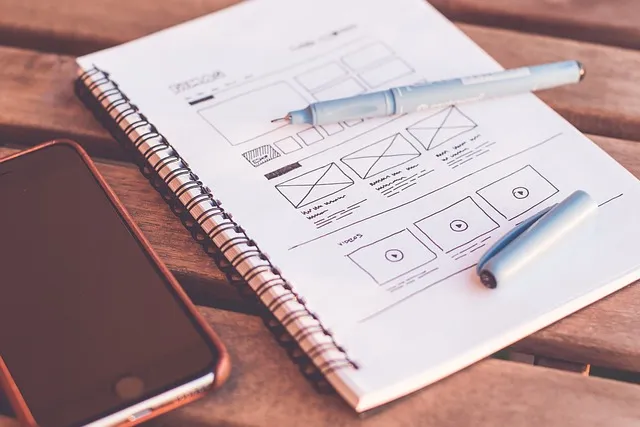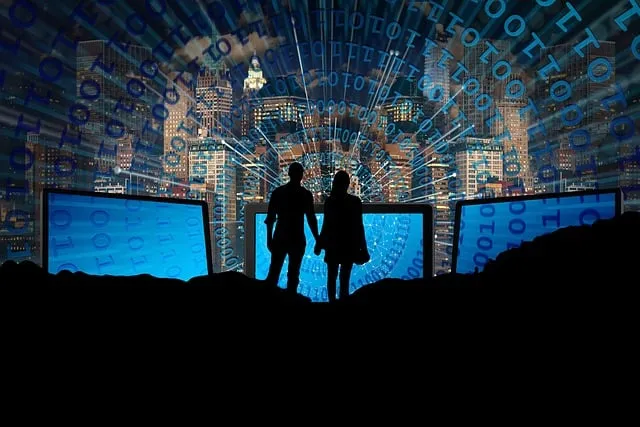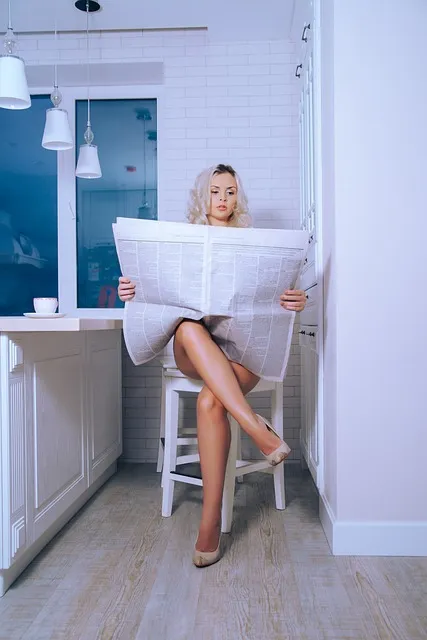The latest web design trends emphasize strategic color use that goes beyond aesthetics to evoke emotional responses and enhance user experiences. Designers are creating minimalist palettes with subtle variations, leveraging complementary and analogous color schemes for harmony, and prioritizing accessibility through enhanced color contrast ratios. Color psychology plays a key role, with warm hues like red and orange evoking energy for e-commerce CTAs, while cool tones like blue and green convey trust and calmness. Cultural impact is also considered to create inclusive interfaces that transcend geographical boundaries, reflecting diverse audience preferences. Popular trends include cool blues and greens, vibrant neons, and earthy tones, catering to contemporary tastes and fostering meaningful user connections in a rapidly evolving digital landscape.
In the ever-evolving landscape of web design, latest web design trends centered around color play a pivotal role in capturing attention, evoking emotions, and shaping user experiences. This article, “Latest Web Design Trends: Unlocking the Power of Color”, delves into the psychology of color in digital spaces, exploring how hues influence behavior across cultures. We unveil trending color palettes that define modern aesthetics, offer practical guides on the color wheel, and provide insights into creating accessible, harmonious designs. From dynamic color categories to innovative gradient backgrounds and sustainable choices, this comprehensive exploration equips designers with tools to master color in contemporary web design.
# Latest Web Design Trends: Unlocking the Power of Color

The latest web design trends are increasingly centered around the strategic use of color, reflecting a deeper understanding of its psychological impact. Designers are unlocking the power of color to evoke emotions, enhance user experience, and create visually appealing interfaces that resonate with audiences. Modern trends lean towards minimalist palettes with subtle variations, allowing for clean aesthetics while still conveying brand identity. This shift is driven by the need for websites to adapt to diverse screen sizes and lighting conditions without overwhelming users with excessive colors.
Color in web design is no longer merely aesthetic; it’s a tool for storytelling and engagement. The latest trends emphasize harmony between colors, utilizing complementary and analogous schemes to foster a sense of balance and cohesion. With an eye on accessibility, designers are also carefully considering color contrast ratios to ensure readability for all users, including those with visual impairments. This thoughtful approach to color not only enhances the visual appeal but also improves the overall usability of websites.
<section id="the-psychology-of-color-in-digital-spaces“>
The Psychology of Color in Digital Spaces

In the realm of web design, the psychology of color plays a pivotal role in shaping user experiences and perceptions. Digital spaces have unique characteristics that influence how colors are interpreted, making it essential to understand the emotional responses they evoke. For instance, warm hues like red and orange can stimulate energy and urgency, making them suitable for calls-to-action (CTAs) or promotions on e-commerce websites. Conversely, cool tones such as blues and greens convey a sense of calmness and trust, often favored in corporate or healthcare brands to build credibility.
The latest web design trends heavily rely on this psychological aspect, utilizing color schemes strategically to engage audiences. By combining colors that resonate with the target demographic, designers can create visually appealing interfaces that enhance user interaction. For example, a website catering to millennials might use vibrant and playful hues, while a luxury brand would opt for sophisticated and nuanced tones to project exclusivity. This tailored approach ensures that digital spaces not only look aesthetically pleasing but also foster meaningful connections between brands and their users.
– Explore how colors evoke emotions and influence user behavior online.

In the realm of web design, colors play a pivotal role in evoking emotions and influencing user behavior online. The latest web design trends often leverage color psychology to create engaging and effective digital experiences. Warmer hues like red, orange, and yellow can stimulate energy, excitement, and urgency, making them ideal for calls-to-action (CTAs) or sales pages. On the other hand, cooler tones such as blue, green, and purple are associated with calmness, trust, and professionalism, making them suitable for corporate websites or content that requires a sense of tranquility.
Understanding how colors affect users is crucial for designers aiming to capture attention and drive conversions. For instance, a study by Pinterest found that 84% of users stated that colors influence their purchasing decisions. By strategically incorporating the right shades, designers can create a sense of balance or contrast, guide user navigation, and foster an emotional connection with the brand. This subtle yet powerful aspect of web design contributes significantly to user engagement and overall website success in today’s competitive digital landscape.
– Discuss cultural variations in color perception and their design implications.

Color plays a pivotal role in web design, but its impact is deeply influenced by cultural variations in perception. What one culture considers vibrant and appealing might be perceived as garish or subtler in another. For instance, while red often symbolizes passion and energy in Western cultures, it’s associated with mourning in many Eastern ones. This cultural lens shapes how users interact with and interpret web designs globally.
Designers of the latest web design trends must be mindful of these differences to create inclusive and effective interfaces. Incorporating colors that resonate with diverse audiences not only enhances user experience but also reflects a broader, more nuanced understanding of global aesthetics. Understanding these cultural nuances allows designers to transcend geographical boundaries and foster meaningful connections through their work.
<section id="trending-color-palettes-for-modern-websites“>
Trending Color Palettes for Modern Websites

In the realm of modern web design, color palettes play a pivotal role in setting the tone and atmosphere for user experiences. The latest web design trends showcase a diverse array of options, from earthy neutrals to vibrant pops of color. Designers are increasingly adopting minimal and monochromatic schemes, leveraging shades of white, gray, and black to create clean, visually appealing interfaces that enhance readability and improve overall usability.
Trending palettes often incorporate shades of blue, green, and purple, reflecting a move towards more serene and calming colors. These cool tones have been shown to promote relaxation and focus, making them ideal for websites catering to health, wellness, and technology sectors. Additionally, there’s a growing interest in using bold, contrasting colors like orange and yellow, which inject energy and dynamism into web pages, perfect for e-commerce sites aiming to capture attention and stimulate conversions.
– Highlight popular color combinations that define contemporary web design aesthetics.

In the realm of latest web design trends, color combinations play a pivotal role in defining aesthetics and user experiences. Among the most popular pairings are shades of blue and green, evoking a sense of tranquility and modernity. This cool-toned duo is versatile, suiting both minimalist and vibrant designs, and effectively communicates trust and professionalism. Another striking combination gaining traction is the contrast between warm oranges and deep purples, which adds energy and depth to websites, making them visually appealing and memorable.
Designers are also exploring high-contrast schemes featuring bold blacks and vivid whites, a timeless yet ever-evolving combination that highlights content and navigates users’ attention. Additionally, earthy tones like muted browns and soft greens, inspired by nature, are being integrated into modern web design to create warm, inviting spaces. These color trends not only reflect contemporary tastes but also cater to user preferences for visual harmony and engagement.
– Provide examples from renowned websites adopting these trends.

The latest web design trends are pushing boundaries with bold color choices, challenging the status quo and adding vibrancy to digital spaces. One prominent example is the use of vibrant neons on platforms like Etsy, where bold pinks, electric blues, and radiant purples create a striking visual impact. This trend not only captures attention but also effectively communicates a sense of energy and innovation. Another notable trend is the integration of earthy tones, as seen on popular design blogs that embrace natural colors like muted greens, warm browns, and soft ochres, offering a calming yet sophisticated aesthetic. Websites like Pinterest showcase how these earthy hues can be utilized to create visually appealing layouts that foster user engagement.
These color trends are not only aesthetically pleasing but also reflect psychological and cultural shifts. Neon colors evoke excitement and youthfulness, while earthy tones promote tranquility and sustainability. Renowned brands like Airbnb and Spotify have already embraced these latest web design trends, incorporating them into their interfaces to enhance user experiences. By staying current with such trends, designers can ensure their websites remain visually compelling and engaging in a rapidly evolving digital landscape.
